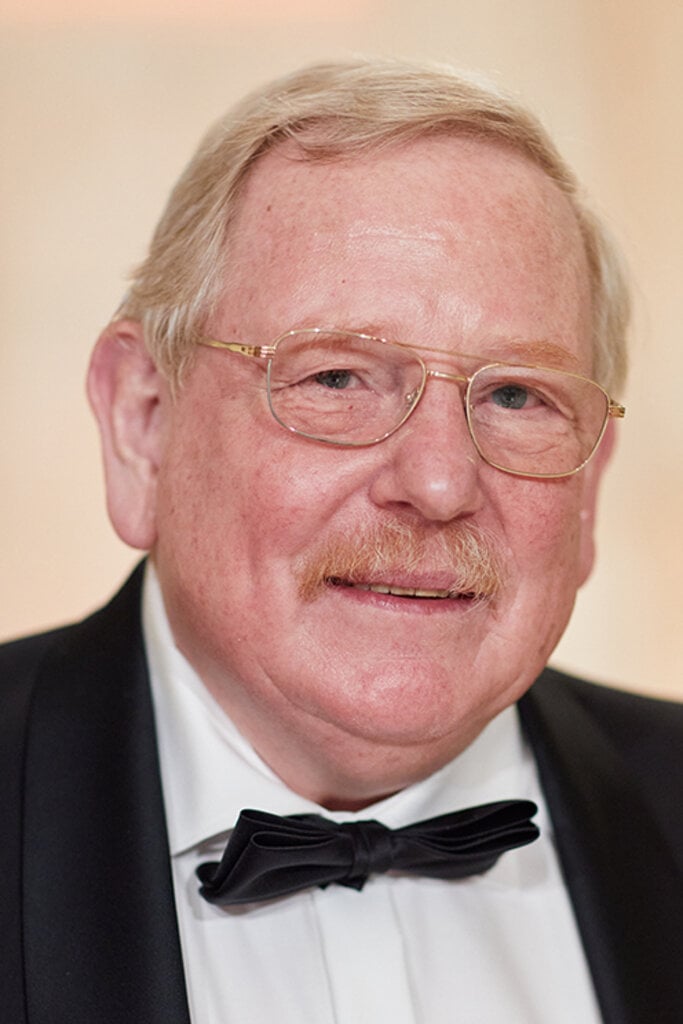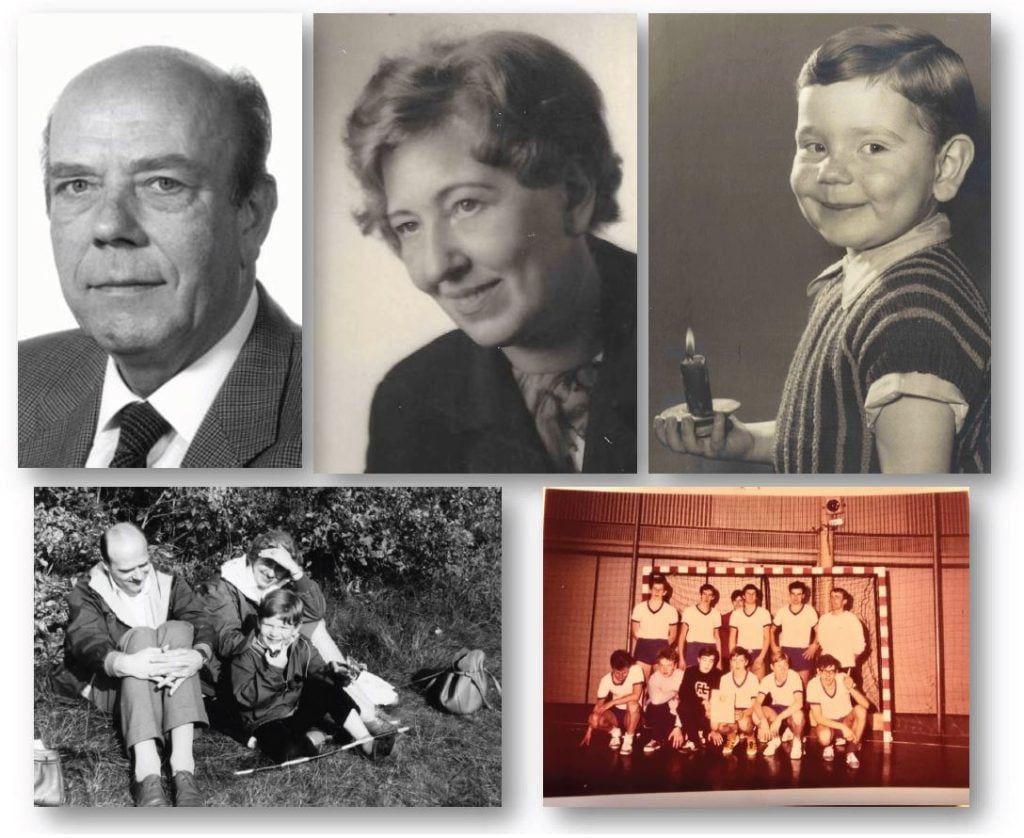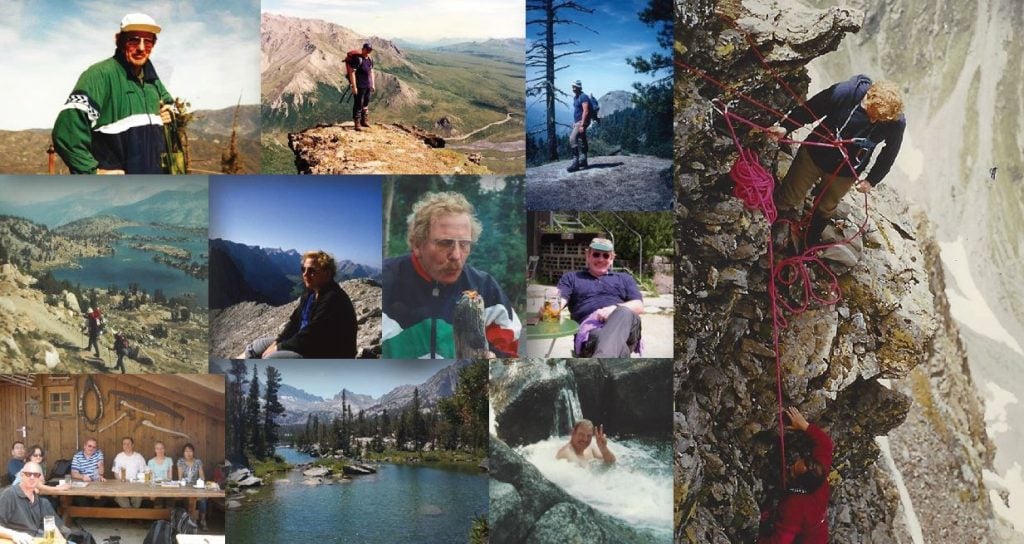Reinhard Genzel
Biographical

Iwas born in Bad Homburg, near Frankfurt, Germany in 1952. My parents and I lived in an apartment right above the physics laboratories of the University, where my father was an instructor. I also started elementary school there. In 1960 my parents moved to southwestern Germany, to the idyllic Black Forest town of Freiburg, bordering France (Alsace) and Switzerland. There I went to high school at a ‘humanistic gymnasium’, featuring 9 years of Latin and 6 years of Greek. Perhaps as a result I have enjoyed a lifetime interest in history and archeology.
My father was a well-known experimental solid state physicist and a gifted university teacher. I learned most of my early physics from him. I will always treasure how he showed me (aged 16) how to build a decent optical spectrometer from its basic optical components, which could resolve the sodium D lines. My mother had studied economics and then worked, together with her father, in managing a leather factory near Frankfurt. Once we had moved to Freiburg, she stopped her professional career and devoted herself to her husband and only child, as was typical of most German women of her generation. Only at the end of her life did she tell me that she regretted having given up her career.
During my high school years, I spent a lot of my time doing intense sports. To this day I am proud of having been one of Germany’s best young javelin throwers, as well as being on my school’s handball team. I even made it into the national German junior track and field team training for the 1972 Munich Olympics. An elbow injury and the increasing incompatibility with university studies brought my track and field career to a rapid end in the early 1970s. I still feel compelled to do some daily workout activity and until recently went frequently on mountain hikes.

After completing my undergraduate physics education at the Albert Ludwig University in Freiburg I moved to Bonn for my graduate education (1970–1974). At that time my father had also moved from Freiburg, to become one of the founding Directors of the new Max-Planck Institute for solid state research in Stuttgart. In a discussion about my future in physics, he advised me against nuclear and particle physics (and in any case his own field, solid state physics). He mentioned that the Max Planck Society (MPG) had just founded a new Institute for Radio Astronomy in Bonn (MPIfR), with a 100m single dish telescope in the Eifel mountains as its key new research instrument. Would I perhaps be interested in doing astronomy? And so, I followed this advice and began my astronomy career initially as a master (Diplom) student, and then as a PhD student (Doktorand) student at the MPIfR, under Peter Mezger, one of the Institute’s Directors.
Working with the then largest radio telescope in the world was a fantastic opportunity for a young student. I was particularly fascinated by the emerging field of molecular spectroscopy. Working in close collaboration with Dennis Downes, my PhD thesis work (1976–78) was on the phenomenon of interstellar water vapor masers, which had been discovered ten years previously by the group of Charles Townes at the University of California, Berkeley (UCB). Townes, Nobel Laureate for the invention of the maser and laser, had switched to experimental astrophysics research in the late 1960s, and was at the forefront of the fledgling field of molecular astrophysics. My thesis work showed that the H2O masers originated in dense, dusty clouds in the process of forming massive stars. Working together with colleagues in the USA and the Soviet Union, we used the 100m telescope as part of a network of intercontinental “Very Long Baseline” Interferometry (VLBI), generated by wave interference milli-arcsecond angular resolution. We demonstrated that the masers were extremely dense little cloudlets, probably compressed and excited by supersonic shocks and the intense radiation of the newly formed stars.

My thesis work was completed in 1978 and led seamlessly to postdoctoral work with James Moran at the Harvard-Smithsonian Center for Astrophysics (CfA). In the next two years, during my time as a CfA Postdoc, we expanded further on the maser VLBI studies and could show that the maser phenomenon was triggered by rapid gas outflows during the protostellar stages.
In 1980 I was offered the unique opportunity to change fields and join the group of Charles Townes in Berkeley, California, initially as a Miller Postdoctoral Fellow and then one year later as Associate Professor in the Physics Department. My luck of becoming tenured faculty at Berkeley at age 29 was mainly the result of Charlie’s support and invaluable mentorship, but perhaps also because I had in the meantime received a competing offer for a professorship at Caltech. The scientific life with Charlie and his large group was an incredible experience. I finally did experimental physics in the lab, as in my youth, was polishing my own mirrors, and learned to work with cryogenic far-infrared detectors. The Townes group was carrying out ground-breaking experimental astrophysics work across the mid-infrared to submillimeter wave-bands, which fascinated me enormously. Life for the next six years at Berkeley was intense and exciting. We were flying an innovative high-resolution Fabry-Perot spectrometer on NASA’s Kuiper Airborne Observatory, to explore for the first time Galactic star formation regions, the Galactic Center, and nearby galaxies, in far-infrared fine-structure and molecular rotation lines. Interestingly the Fabry-Perot reflectors and other filters in the instrument were based on a stretched metal-mesh technology which my father had invented some years prior. I was trying to combine teaching physics, with intense research in infrared and submillimeter spectroscopy – developing new instruments, working with my first graduate students, and finding time for the family. During that time, I was very much helped by Dan Jaffe, an old friend from the CfA, who had joined my fledgling group as a Senior Fellow at the UCB Space Sciences Lab, and taking on many tasks I really disliked and was not good at, in particular hunting for grants. Another key person was my first student, Andy Harris, who has also remained a lifelong friend.

At that time, my family was also developing. In 1976, I had married Orsolya Boroviczény, whom I had got to know in my late high school days. She had studied medicine at the University in Bonn and at the Harvard Medical School in Boston, and then carried out her pediatrics residency at Children’s Hospital in Oakland. Our older daughter, Daria, was born in Boston in 1979 and the younger one, Lisa, in Berkeley in 1983. California and Berkeley became more than a temporary residence. Even after returning to Germany in 1987, the family considered Berkeley as our ‘Heimat’, that sentiment being an important factor in my taking on a commitment as part-time professor in the UCB Physics department again in 1999. The current status of the family, including two grandchildren is summarized in Figure 4.

In 1986 I was offered and accepted a directorship at the Max Planck Institute for Extraterrestrial Physics (MPE) in Garching, near Munich, in significant part due to the support of Gerhard Haerendel and Joachim Trümper. At the time, I was quite unsure whether returning to Germany was the best choice. Berkeley was wonderful, Europe looked pretty un-dynamic. However, I never regretted it. The older I get the more I am grateful to the Max Planck Society (MPG) for providing such an absolutely wonderful opportunity to pursue basic research at the top level with so few strings attached.
Building up a substantial infrared/submillimeter experimental astrophysics group at MPE has been a fantastic and all-consuming opportunity for me. We started from a small core of a dozen people around senior scientist Siegfried Drapatz, and grew to more than sixty over two decades, when we were engaged in two large space experiments with the European Space Agency (ESA). Our style was similar to what I had learned from Charlie in Berkeley. The most important aspects driving our research are the fundamental large science questions in Galactic and extragalactic star formation, physics of the interstellar medium, galaxy evolution, massive black holes (the Galactic Center being the most important goal) and their activity, and co-evolution over cosmic time of the activity of these massive black holes with their host galaxies (active galactic nuclei: AGN). As I have described in more detail in my Nobel Lecture about our Galactic Center research, we next identified how we could tackle these questions with novel infrared to millimeter experiments. These longer wavelengths were not yet explored, but are of great interest astronomically for studying cold, dusty regions, or regions with large cosmological redshifts. Novel technologies (adaptive optics, integral field spectroscopy, spatial interferometry, photonics, new semi-conductor detectors etc.) promised very substantial progress. Typically, each project has a senior scientist project leader, and 2 to 7 additional scientists and postdocs, a few masters and PhD students, plus additional technicians and engineers ‘on delegation’ from the MPE central divisions. Our team culture calls for sharing as best as possible in the various challenges, from hardware/software design, building and testing, to observing, data analysis and interpretation to, finally, publications and conference presentations. As an umbrella of these individual projects groups, we have a circle of senior scientists (chaired for many years by Linda Tacconi and Dieter Lutz) who bring the individual parts back to an overall strategy.
Having obtained first science results with one of these new instruments, new ideas and questions came up and the cycle repeated. A key difference from Charlie’s approach has been the scale of the experiments, and of our teams, driven by the possibilities available at the MPG and at the MPE. Because of the long space research tradition of MPE since its inception in 1963, we dared to do bigger, more ambitious and sometimes riskier experiments, not only relying on students and postdocs, but also on professional physics, astronomy, engineering and IT staff in the group, and in the central divisions at MPE.
Initially we carried out projects without immediate connection to a specific telescope. Rather we developed an instrument based on our science questions and then made a proposal to a suitable observatory to bring the instrument to their telescope for a campaign typically lasting 1–2 months, sometimes several times. To conclude such deals typically meant that in return we made our instrument available to other scientists in the community of the observatory. The SHARP speckle camera for the European Southern Observatory’s New Technology Telescope (ESO NTT) was one example of such an instrument, ‘3D’, the world’s first infrared integral field spectrometer, a second, and ‘Receiver G’, a heterodyne spectrometer for submillimeter observations on the James Clerk Maxwell Telescope (JCMT) on Hawaii’s Mauna Kea, a third.
This style changed with the advent of the Very Large Telescope (VLT). ESO was unlikely to allow visitor instruments on its brand-new facility any time soon, so we changed our style to competing for instrumentation developments ESO wanted to have on their new 8m class telescopes, and bidding for a building contract. The adaptive optics camera CONICA (with the Max Planck Institute for Astronomy, MPIA Heidelberg) as part of the NACO adaptive optics system (with the Observatoire de Paris), the SPIFFI-SINFONI integral field spectrometer (with the Observatory of Munich (LMU), the PARSEC laser guide star facility, the KMOS multiplexed integral field spectrometer (with the UK Universities Durham and Oxford, with the UK ATC in Edinburgh, and the Observatory of Munich (LMU) and finally, largest of all, the GRAVITY interferometric beam combiner, were all examples of this approach. In this way we earned privileged (guaranteed) telescope time (GTO), which we could use for our top science. The same happened for our involvement in the European Space Agency (ESA) infrared space telescopes ISO (as co-PI Institute on the Short Wavelength Spectrometer (SWS), with Leo Haser as co-PI) and on the Herschel space telescope (as lead institute for the PACS instrument, with Albrecht Poglitsch as PI). In retrospect I am sure that most of our most important science results in the Galactic Center, in active galactic nucleus (AGN) studies and in galaxy evolution would not have been possible without this GTO mechanism, which permitted devoting significant telescope time over sustained periods to a single or a few core science projects.
In the millimeter range, we gave up our own developments fairly early on, and instead relied on and strongly supported the Institut de Radioastronomie Millimetrique IRAM), a German-French-Spanish joint institution in Grenoble, France. IRAM operates a 30m diameter single dish telescope on Pico Veleta (Spain), and an increasingly powerful interferometer on the Plateau de Bure in southern France and develops all necessary focal plane instrumentation for these world-class facilities. Our IRAM involvement was and continues to be a great success. With the recent upgrade to the Northern Extended Millimeter Array (NOEMA), the interferometer is by far the most capable millimeter interferometer in the northern hemisphere, and in several aspects comparable and competitive with the larger international Atacama Large Millimeter Array (ALMA) facility in Chile.
At the current count, we have built 25 instruments, most in a leadership or co-leadership role. Over my past 35 years as a Director here at MPE, the IR-submm group has had 70 PhD students, 85 postdocs and scientists, 15 senior scientists and 25 technical staff. I am particularly proud about the diversity of our group, both in terms of geographical distribution (>25 different countries) and gender (our female contingent has lately been varying between 30 and 36%, as compared to 12% in 1986).
I have to admit that my intense and continuing engagement in many aspects and areas of astrophysical research – trying to keep our group at the top level, and anticipating the next steps (e.g. with the remarkable breakthroughs our VLTI infrared interferometer activities led by Frank Eisenhauer, and our leadership of the first-light camera MICADO, P.I. Ric Davies, for the next-generation, 39m diameter giant extremely large telescope of ESO, the ESO-ELT), leaves little time for other things. My regular visits to Berkeley in winter and summer have become welcome interludes, with the possibility of reading books, writing papers in peace, hiking along the beautiful California coast and thinking about the next steps.

It has been a privilege for me to be able to have had such a wonderful, supportive family and a group of many outstanding and capable colleagues and friends, who were able to join and tolerate a sometimes grumpy or “single channel” guy. It has been (and continues to be) a lot of fun! Thank you, Linda, Natascha, Adriane, Susanne, Albrecht, Amiel, Dieter, Eckhard, Frank, Helmut, Sebastian, Stefan, Ric, Taro and Thomas.
* https://spikegadgets.com/
© The Nobel Foundation 2024
Nobel Prizes and laureates
Six prizes were awarded for achievements that have conferred the greatest benefit to humankind. The 14 laureates' work and discoveries range from quantum tunnelling to promoting democratic rights.
See them all presented here.
